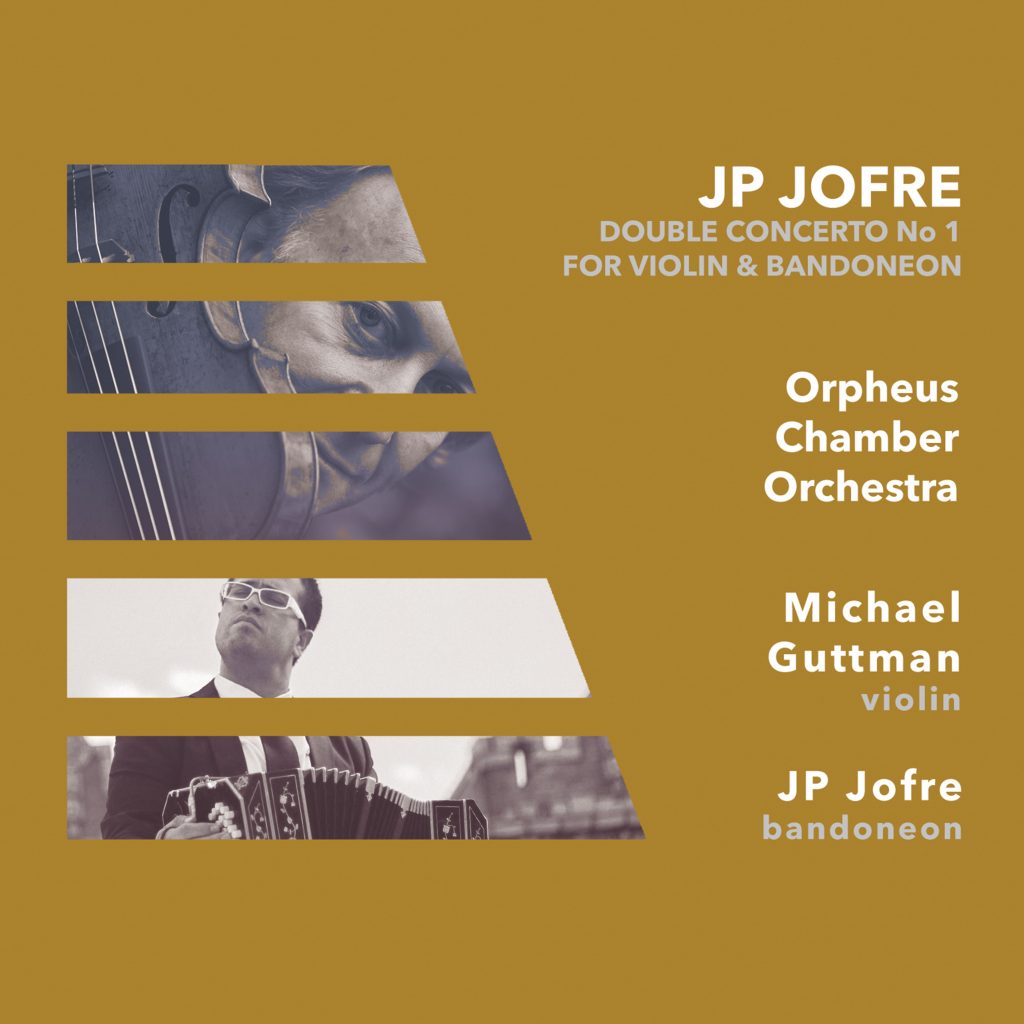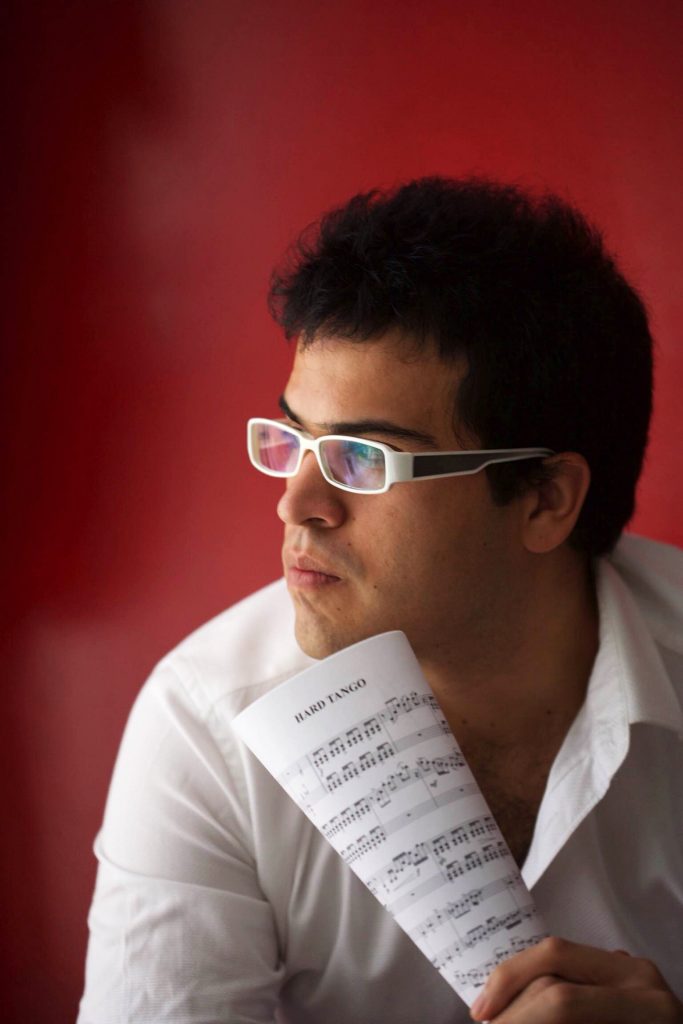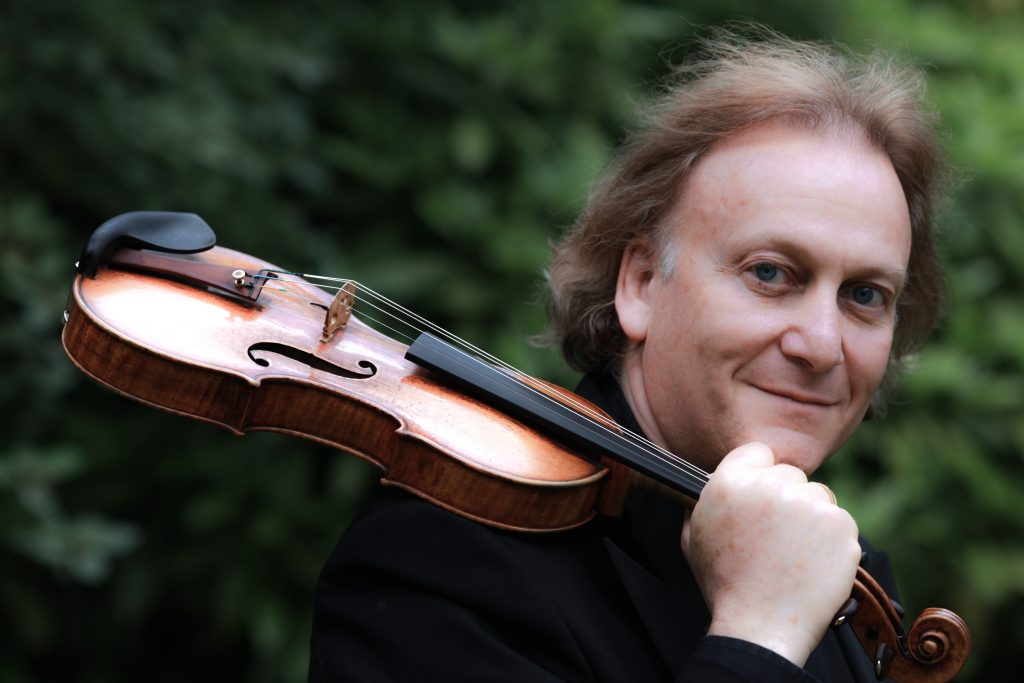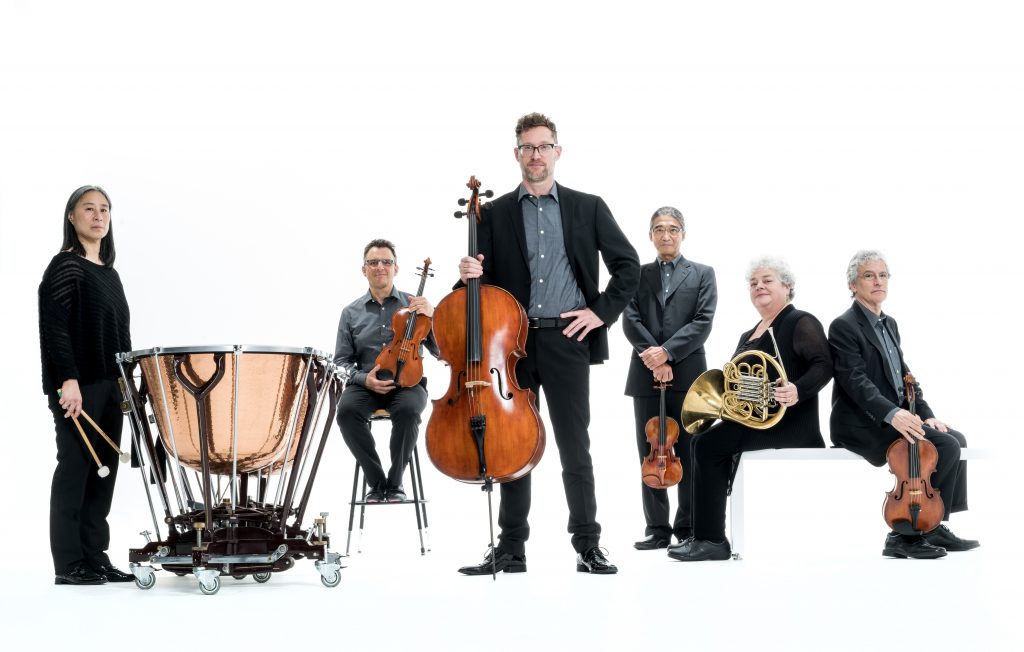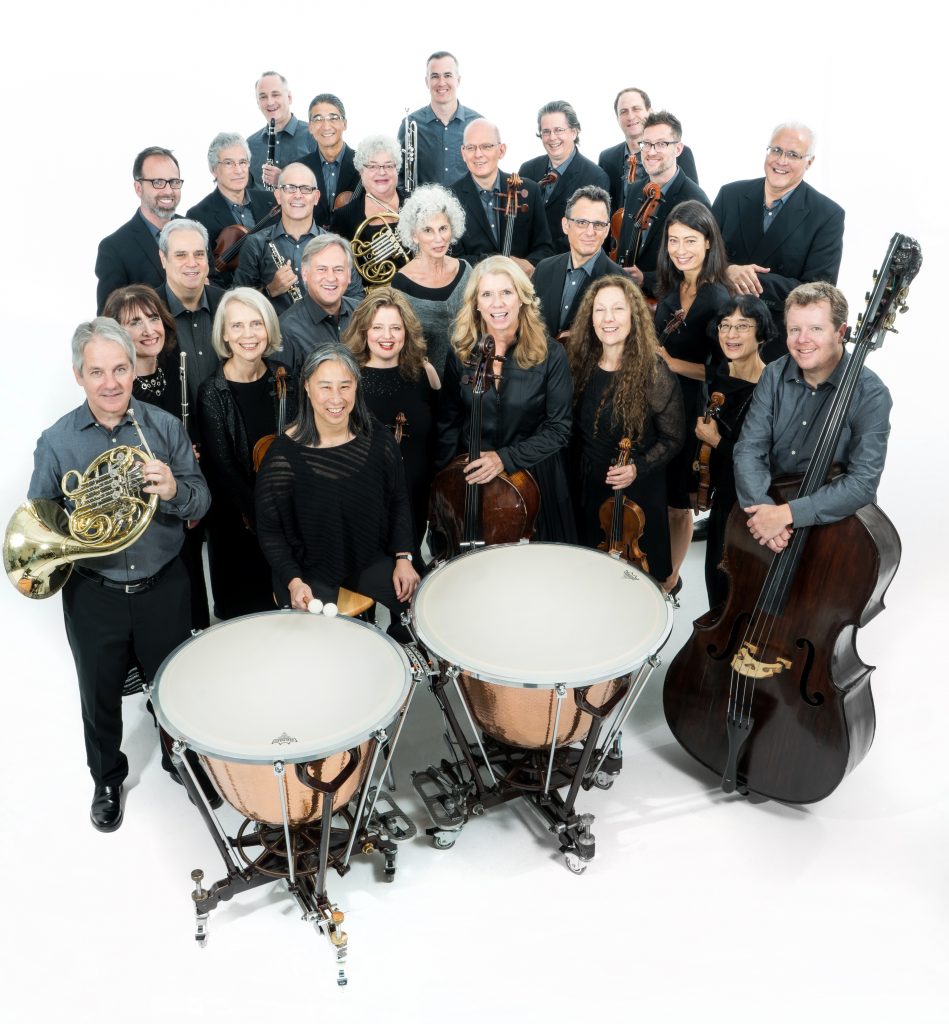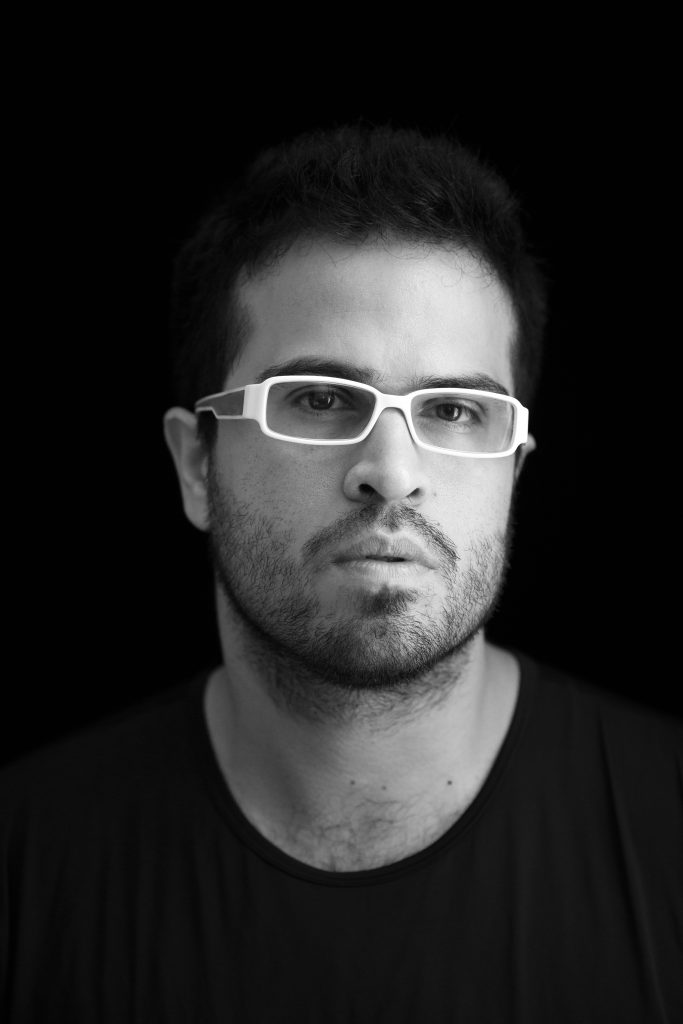Electrifying Recording Breaks New Ground in Orchestral Music
Featured Performances by Jofre, Violinist Michael Guttman and The Grammy-Winning Orpheus Chamber Orchestra
There’s a reason we remember the trailblazers, those who accomplished something first. They’re the daring ones, the people who defy convention. Composer and master bandoneón player JP Jofre joins the ranks of those who have ventured into new musical spheres by writing the first-ever double concerto that couples his devilishly difficult instrument and the violin in a breakthrough chamber music work commissioned by violinist Michael Guttman, music director of the Symphony Napa Valley. The recording of the Double Concerto for Violin and Bandoneón, No. 1 on the Progressive Sounds Label features Jofre, Guttman and the acclaimed Grammy-winning Orpheus Chamber Orchestra. It will be available September 15 on iTunes, Amazon, Spotify, and SoundCloud.
Considered the voice of the tango, the bandoneón is like a portable church organ with the wingspan of a condor. With its expanding and contracting bellows, the instrument seems to be breathing as it produces sounds that can start with the delicacy of a whisper and soar to thunderous power. “When I play I feel the instrument in my skin and in my bones; we are inhaling and exhaling together,” Jofre says.
JP Jofre
The reaction of audiences across the world is equally heartfelt. Whether in chamber music festivals or performing with orchestras, Jofre receives rapturous responses from music fans and critics alike. The New York Times recently profiled Jofre, extolling his creativity and expressiveness as an artist and composer. For the world premiere of his Tango Movements with the Symphony Silicon Valley premiere of his Tango Movements with the Symphony Silicon Valley the Mercury News wrote: "He is an electrifying composer and performer”.
In writing the double concerto, Jofre wanted to bring an orchestral perspective to the music of his native Argentina. While steeped in the world of tango and Argentinian folk music and dance, the piece reflects Jofre’s respect for the classical canon. He counts as his influences Bach, Bartok, Stravinsky, and of course his fellow countryman, nuevo tango legend Astor Piazzolla, among others. The double concerto is a conversation not only between the bandoneón and violin, and the soloists and orchestra, but also between the traditional and the modern. The concerto form is classic, the execution pure Jofre.
Michael Guttman
After performing several times with Jofre, violinist Guttman commissioned the work. “The sound of a double concerto for piano and timpani by the Czech composer Bohuslav Martinu was my jumping-off point,” Guttman says. “JP is such a gifted musician, so I was certain he could create a unique piece based on the bandoneón. Basically though, he had free rein. “It was a huge honor and also definitely a big challenge since there was no double concerto for these instruments at the time,” Jofre adds.
The piece got the final seal of approval with Orpheus, among the world’s most influential ensembles, coming on board. The group has worked with such musical luminaries as Itzhak Perlman, Yo-Yo Ma and Emanuel Ax. “JP captures the seductive mystery of the genre with ease, expertise and virtuosity,” noted Orpheus violinist Eric Wyrick, who served as the group’s Artistic Director and is the Concertmaster of the New Jersey Symphony Orchestra.
The concerto begins on a melancholic note, and then opens up into an energetic Allegro, ending the first movement with a melodic and virtuosic variation on its tango inspired main theme. The Adagio second movement, written to mark the passing of a dear friend, has a wistful quality heightened by its celestial-sounding opening. Preceding the Milonga third movement is a cadenza influenced by the rhythms of a traditional Argentine folk dance. It builds to a peak signaling the entrance of the piano, double basses, and cello playing the Milonga rhythm. The feverish Milonga diminishes in intensity, held only by the double basses, cellos and violas. The bandoneón enters solo, breaking the mood, as if it came out of nowhere. Before it isappears, it whispers the majestic theme the violin will soon play. Then suddenly, the Milonga erupts with a fortissimo thematic restatement leading to the finale.
The result is an exquisitely crafted and balanced orchestral work, fierce yet hauntingly beautiful. Jofre coaxes out the unique expression of each instrument, from a percussive use of the violin to an exploration of the full range of the bandoneón. “JP has created his own musical syntax,” Guttman says. “You hear the rebelliousness of the Argentine spirit in how he leaves musical phrases lingering in the air. There is always something surprising and unexpected in his compositions.”
The recording also features three other bandoneón-violin duets by Jofre: “Como el Agua,” was inspired by a Bruce Lee quote that begins: “Don't get set into one form, adapt it and build your own, and let it grow, be like water.” Jofre wrote the lullaby “Sweet Dreams,” for the birth of his niece, and the prelude “Before the Curtains,” for violin virtuoso Philippe Quint.
Jofre had the world premiere of his second double concerto for bandoneón and violin with Francisco Fullana and the San Antonio Chamber Orchestra in June. He will be on tour in Australia, China, Spain, Korea, Seattle and Taiwan through 2018.
Argentine composer-musician-arranger JP Jofre is considered to be the premiere bandoneón player of the modern age. Among his latest commissions is a new double concerto for clarinetist-producer Sunny Kang. He has been hailed as one of today’s leading artists by Lincoln Center and has received repeated accolades from The New York Times. He has taken contemporary tango to some of the most important music festivals in the U.S., Europe, Asia and South America, and performed as a soloist with numerous orchestras, including San Diego Symphony, San Antonio Symphony, Symphony Napa Valley and Argentina's National Symphony Orchestra. His music has been recorded by such leading musicians as Paquito D’ Rivera, the winner of 14 Grammys, Orpheus Chamber Orchestra and Kathryn Stott, and used for a dance work choreographed by Herman Cornejo of the American Ballet Theatre. Jofre is a recipient of Argentina’s prestigious National Prize of the Arts grant and has given lectures at Google Talks, TED talks and The Juilliard School.
Michael Guttman is an eminent violin soloist, conductor and music director of festivals around the world and has performed at major venues worldwide, including New York’s Avery Fisher Hall, London’s Barbican Centre, Paris’s Salle Pleyel, Amsterdam’s Concertgebouw and Tokyo’s Bunko Kaikan. He collaborated with the late conductor and composer Lukas Foss at the Music Festival of the Hamptons, a relationship that initiated his conducting career. Guttman is the music director of Symphony Napa Valley, principal guest conductor of the Brussels Chamber Orchestra, the leader of the acclaimed Arriaga Quartet and of the Michael Guttman Tango Quartet, as well as the founder and artistic director of Pietrasanta in Concerto, the highly praised music festival in Tuscany.
The acclaimed, Grammy-award winning Orpheus Chamber Orchestra strives to be the world’s premier chamber orchestra by performing music at the highest level without a conductor, challenging artistic boundaries, inspiring the public to think and work with new perspectives, and building a broad and active audience in New York City and around the world.




